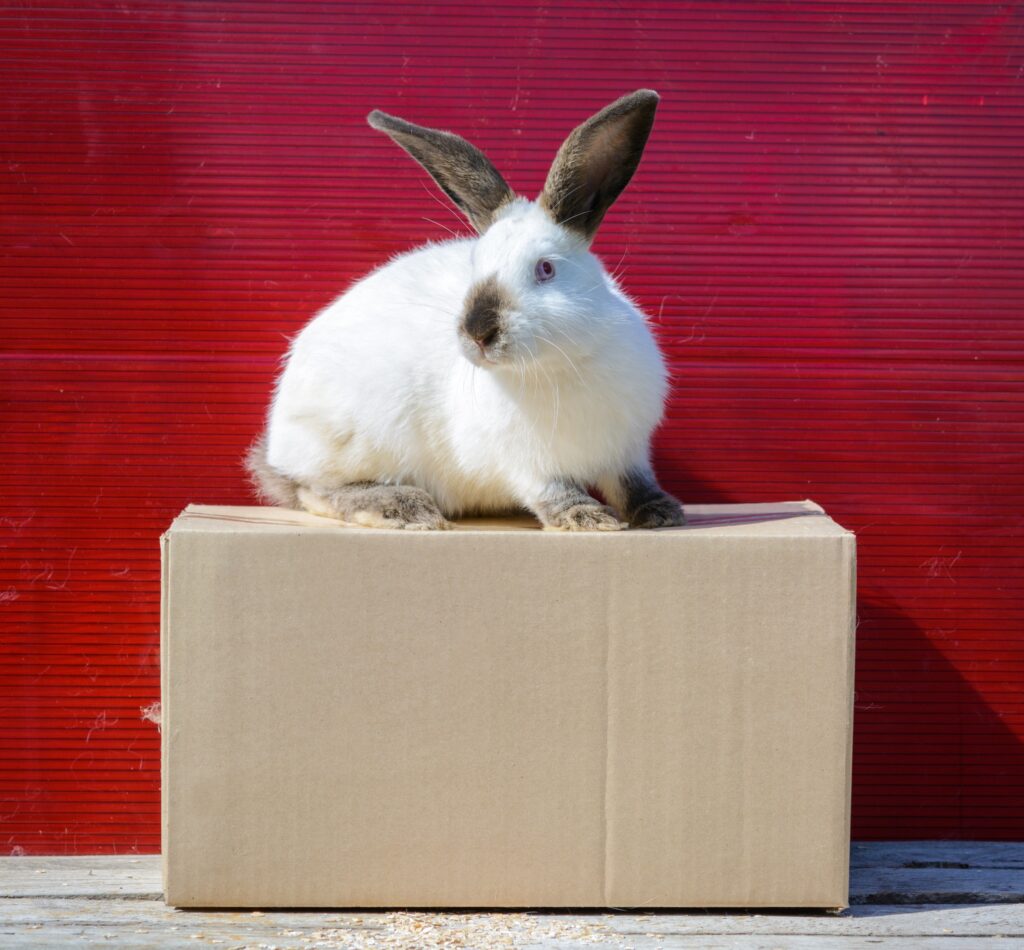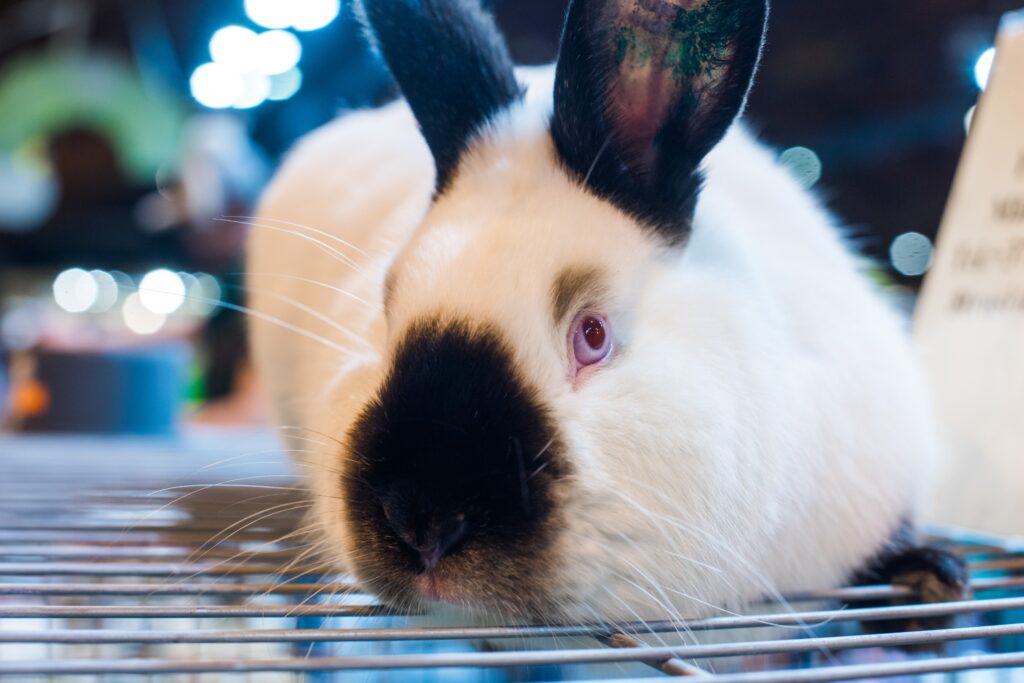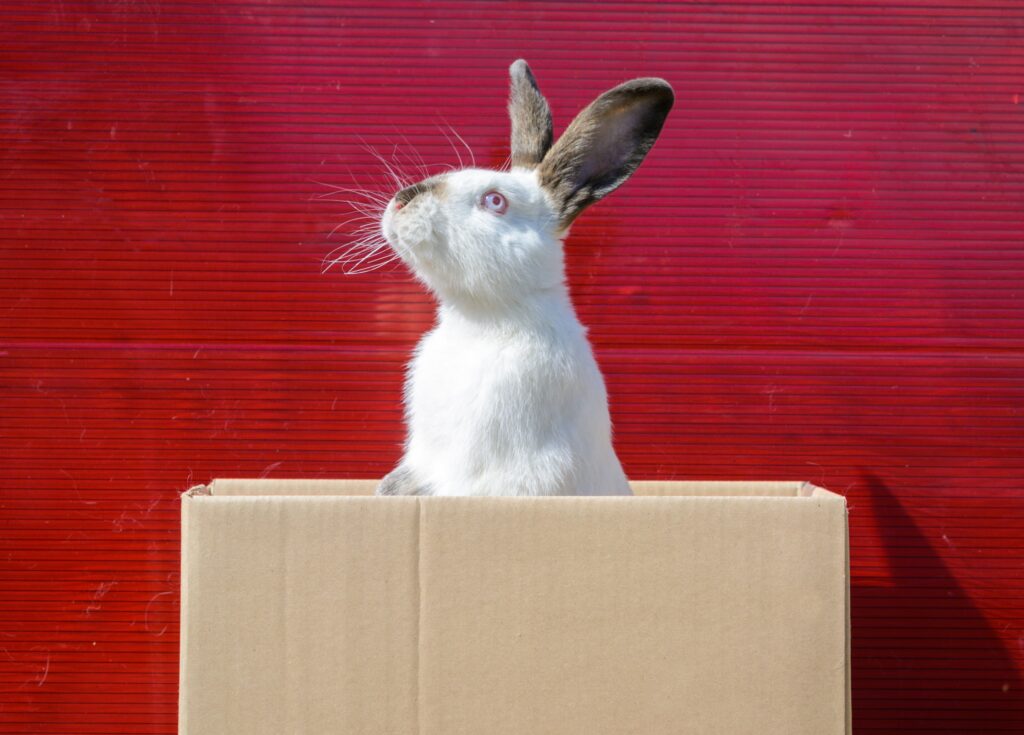Why Do Californian Rabbits Change Color? The Science Behind Their Coat Transformation
Californian rabbits are an attractive rabbit breed with a distinctive coat coloration. They are known for their white fur, dark ears, nose, and feet markings. However, many people wonder why their fur changes color. This article will explore the reasons why Californian rabbits change color.

One of the main reasons why Californian rabbits change color is due to molting. Like many other rabbit breeds, Californians molt every three months. This natural process helps them maintain an appropriate body temperature and protects them from predators. The rabbits’ fur may change color during molting as new fur grows.
Another reason Californian rabbits change color is due to a change in their environment. The amount of daylight changes in the winter, which can cause the rabbit’s body to produce less melanin. Melanin gives the fur its color, so a decrease in melanin production can result in a color change. Additionally, the colder the climate the rabbit resides in, the darker the points of its ears, nose, and feet will be.
Genetics
Californian rabbits are known for their unique and distinctive coat color. Understanding the genetics behind their coat color can provide insight into why and how their fur changes.
Coat Color Genes
A combination of genes determines the color of a rabbit’s coat. One of the Californian rabbits’ main genes responsible for coat color is the Ch gene, also known as the Himalayan gene. This gene affects pigment distribution in the fur, resulting in dark markings on the ears, nose, and feet.
In addition to the Ch gene, mutations at the C locus can also affect coat color. These mutations can result in rabbits with varying degrees of shading, temperature-sensitive coat color, complete albinism, or lack of pigment.
Inheritance Patterns
Coat color is inherited from the rabbit’s parents in a predictable pattern. The Ch gene follows a simple dominant-recessive inheritance pattern, where rabbits with at least one dominant allele (Ch) will express the Himalayan coloration. In contrast, rabbits with two recessive alleles (chch) will have a white coat.
The C locus, on the other hand, follows a more complex inheritance pattern. Several genes can be inherited at this locus, resulting in various coat colors and patterns.
The genetics behind Californian rabbit coat color is a fascinating and complex topic. Understanding the underlying genes and inheritance patterns, we can better understand why and how these rabbits change color.
Environmental Factors

Californian rabbits are known for their beautiful coat, which changes color due to different environmental factors. These rabbits’ unique coloring makes them stand out from other rabbit breeds. The color of their fur changes to protect them from harsh weather conditions, predators, and other environmental factors.
Temperature
One of the main environmental factors affecting Californian rabbits’ color is temperature. The colder the climate, the darker the ears, nose, and feet point. This is because the rabbit’s body produces more melanin, responsible for the dark coloration. The darker coloration helps the rabbit to absorb more heat from the sun, keeping them warm in cold weather.
Light Exposure
Light exposure is another environmental factor that affects the color of Californian rabbits. The amount of daylight changes in the winter, meaning the rabbit’s body produces less melanin. This results in a lighter coloration of the fur. In the summer, the rabbit’s body produces more melanin due to increased exposure to sunlight. This results in a darker coloration of the fur.
Californian rabbits molt every three months, a natural process for maintaining an appropriate body temperature. The rabbit’s fur may change color during molting, which is normal. The rabbit’s fur may also change color for its protection from predators.
The color change of Californian rabbits is a natural process influenced by environmental factors such as temperature and light exposure. By adapting to their environment, these rabbits have developed a unique and beautiful coat that stands out from other rabbit breeds.
Health and Nutrition
Diet
A Californian Rabbit’s diet is crucial to its health. A balanced diet should include unlimited access to high-quality hay, which provides the primary source of nutrition. Feeding your rabbit around ¼ cup of pellets daily and including fresh vegetables and water in their diet is also recommended. Leafy greens, like kale and spinach, are good choices.
It is important to avoid feeding rabbits foods high in sugar or fat, as this can lead to obesity and other health issues. Also, avoid giving them foods that are toxic to rabbits, such as chocolate or avocado.
Stress
Stress can have a significant impact on a Californian Rabbit’s health. It is important to provide them with a safe and comfortable environment, with plenty of space to move around. They should have a quiet and peaceful place to retreat when they need some alone time.
Handling your rabbit gently and regularly can help to reduce stress and build trust. You should also keep their routine consistent, as changes can be stressful for rabbits.
In addition, it is important to keep your rabbit’s living area clean and free from any potential hazards. This includes removing any sharp or small objects they could swallow and regularly cleaning their litter box.
Overall, providing a healthy diet and a stress-free environment is essential for the well-being of a Californian Rabbit.
Breeding

Breeding plays a significant role in the color of Californian rabbits. The breeders selectively breed rabbits to maintain the desired coloration and traits in the offspring.
Selective Breeding
Selective breeding aims to produce offspring with specific traits by choosing rabbits with desirable features and breeding them. In the case of Californian rabbits, breeders select rabbits with the ideal white body and dark points. The breeders ensure that the rabbits they breed have the Himalayan gene responsible for the black points on their bodies. By selecting rabbits with the Himalayan gene, breeders can maintain the desired coloration in the offspring.
Crossbreeding
Crossbreeding is another breeding technique that can influence the color of Californian rabbits. Breeders may crossbreed Californian rabbits with other breeds to produce offspring with unique traits. However, crossbreeding can sometimes result in offspring with unpredictable coloration. To maintain the desired color of the Californian rabbit breed, breeders must be cautious when crossbreeding.
Breeding is a complex process that requires careful selection of rabbits with the desired traits. Breeders can maintain their unique coloration and traits by selectively breeding and crossbreeding Californian rabbits.
Conclusion
In conclusion, Californian rabbits change color due to a natural process called molting that occurs every three months. During molting, rabbits shed their old fur to make way for new fur. This process is mainly for maintaining appropriate body temperature, and a rabbit’s fur may also change color for protection.
It is important to note that not all Californian rabbits change color during molting. However, they all have red eyes, a distinguishing characteristic of the breed. Californian rabbits are popular due to their docile nature, making them great family pets.